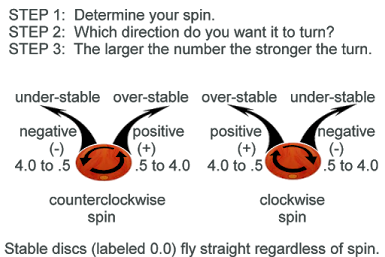About a month later I began my first assignment: assist that investigating team. Although many dozens of people assisted (some for years) my assistance can only be measured in keystrokes and sheets of paper, not in measurable results.
Every person who worked with, lived near, knew, heard of, or shared a sidewalk with the victim was interviewed (several hundreds of people).
Every person who parked their car in that parking lot or any of the nearby lots (500+ people) were interviewed.
For several weeks, checkpoints identified every pedestrian/car/driver who came near that parking lot in the morning. Then those people were interviewed (1,500+ additional people).
Every occupant, of every building with a window facing the parking lot, was interviewed (almost another 100 people).
The wife of the victim ($100,000 life insurance beneficiary) was identified as recently co-habitating (yea, that was the word we used: 'co-habitating') with a "new boyfriend".
She and boyfriend were interviewed as suspects. Both denied any involvement and agreed to take polygraph examinations. Both failed their polygraphs, continued to deny, and terminated their interviews. Both declined all further interviews and got a lawyer.
 Interviews were conducted attempting to locate anyone who may have sold a .22 caliber revolver to either the wife or the boyfriend, who may have seen them together prior to the homicide, or who may have heard them brag about the homicide afterward (another few-dozen people).
Interviews were conducted attempting to locate anyone who may have sold a .22 caliber revolver to either the wife or the boyfriend, who may have seen them together prior to the homicide, or who may have heard them brag about the homicide afterward (another few-dozen people).Every one of the previously-interviewed almost 3,000 people were re-interviewed and shown a photographic line-up which included vehicles and faces of the boyfriend and wife.
Not one person was located with any useful information. In the US, failing a lie-detector is insufficient evidence to take any action—and the two polygraph results are the only pieces of ‘suspicion’.
Qualifying as a true ‘cold case’—I believe this homicide is still unresolved.
Eleven years later, I assumed a supervisory role over offices in the Balkans. These offices had a very large, very complex, ongoing investigation involving: bribery, graft, larceny, kick-backs, conspiracy, wire-fraud and maybe a dozen other lesser felonies. The amount of suspected loss—in US Government funds—was measured in excess of 100 million dollars. The suspect of this investigation was Kellogg Brown & Root Inc. (at the time, a subsidiary of Halliburton Inc.) and several of the company’s local employees, a few of it’s regional managers, and a couple of it’s executives.
 The investigation had already taken over 18 months, dozens of full-time investigators, rooms full of boxes of documents, and hundreds of gigabytes of electronic data (on floppy disks). I was required to supervise the investigators, be familiar with the over-all investigation and act more as an administrator than an investigator.
The investigation had already taken over 18 months, dozens of full-time investigators, rooms full of boxes of documents, and hundreds of gigabytes of electronic data (on floppy disks). I was required to supervise the investigators, be familiar with the over-all investigation and act more as an administrator than an investigator.Lawyers from Halliburton met with high-ranking Army Officers and government lawyers. They offered them a check (with no admission of wrong-doing attached) for 2 Million dollars—if they would terminate the investigation.
The Government lawyers told the Halliburton lawyers "No." We continued our investigation. The check for 2 Million returned to Texas.
A few months later, while providing oversight and review, the provenance of a single piece of paper came into question and this was what was determined:
A confidential informant (CI) from inside Brown & Root, had provided the sheet of paper to an investigator almost a year earlier.
The paper contained a small slice of evidence—in the form of names, a signature, and some initials—that indicated conspiracy to commit fraud, as well as larceny, had been going on for years.
That piece of paper was used as a supporting document in affidavits to obtain several search warrants for almost a year.
The search warrants had uncovered hundreds of other slices of evidence (buried in the tons of boxes of paper and electronic data).
Prior to the CI providing the piece of paper to the investigator, the CI and the investigator met and the investigator asked, ‘Can you get me any proof they are doing what you say?’
'What kind of proof?’
‘Documents, bill of ladings, ledgers that show one price is what they pay but the other price is what they tell the Government they pay. Stuff like that.’
(This is where they should have stopped talking)
‘There’s a letter I saw last week from...to...that shows who...details of...and costs of...as well as how much.... Would that help?’
‘Yea, Great. Get me that letter.’
Unfortunately, we have laws prohibiting the unreasonable search and seizure of property by agents of the Government. And when that investigator targeted that specific piece of paper, and asked a CI to obtain it, he was “circumventing a search warrant”.
It would have been acceptable for the CI to share reams of unidentified documents in hopes there would be evidence on them, but as soon as the investigator knew of a specific item of evidence he had to ask a judge for a search warrant to obtain it. Tasking the CI to retrieve it was the same as breaking in and stealing it in the eyes of the law.

“Fruit of the poisonous tree” relegated every slice of evidence obtained over the past year to be irrevocably tainted and no longer of any value.
The entire investigation was folded-up and shelved. Hundreds of thousands of investigative man-hours were lost because of one mistake with one sheet of paper.
Nothing incites to money-crimes like great poverty or great wealth. — Mark Twain











































No comments:
Post a Comment